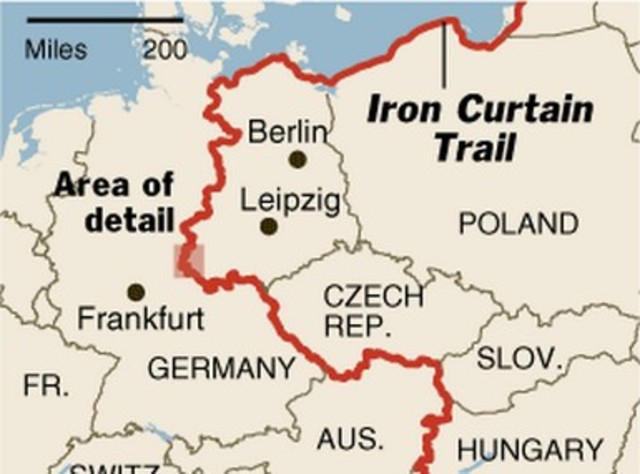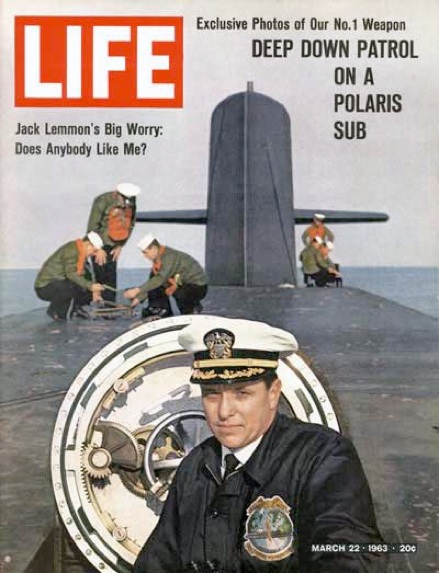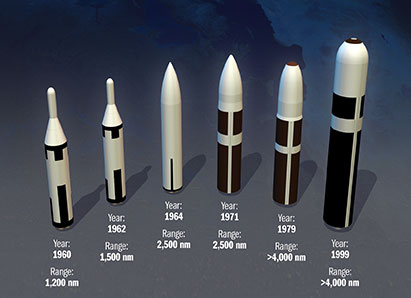The End of the World was THIS close.
This is a story about a series of events that happened in the late 1950’s that changed the course of the world in one of its darkest times.
America and her allies had squared off against the Soviet Union in an increasingly complex game of chess that started in the collapsing days of World War 2. The victorious parties had worked together to destroy the maniacal Third Reich at a horrendous cost of life and materials. The amount of people who were sacrificed in this gruesome conflict may never truly be understood. The official counts had losses in the millions but the complete count was shrouded in secrecy by the Soviets. Winning cost more than will ever be known but at the end, two distinct forms of governance stood at odds with each other.
The west was firmly committed to a return to normalcy and democracy. The Soviets were just as determined to continue the march towards a world where everyone was socialist in general, communist in particular and intimidated as a whole. The thought of the rising for a third time in one century was more than the Soviet leadership could bear and they were determined for it to never happen again.
The Iron Curtain falling across Europe was only one of the challenges facing relationships between the two ideologies. The spread of weapons of mass destruction quickly got out of control as the Soviets followed the US in the development of first atomic bombs and later hydrogen bombs of even greater destruction. Conflicts and wars around the globe including in Korea quickly showed how dangerous the world still was. Even in the early days, the thought of using nuclear weapons took on nightmarish proportions.
By 1957, large quantities of troops in Europe and arsenals of missiles were threatening to destabilize the world. President Eisenhower had a special council put together in secrecy and that council would produce a report for he and the national security team on what direction the country should take. When the report was released, Ike and his team were stunned by the things that were revealed. The United States was incredibly vulnerable to complete annihilation by Soviet Forces including long range bombers, missiles and submarine launched weapons.
The experiment called America was in real danger of being blown to hell. And there was very little that could be done to stop it without a radical change in course.
On December 20 1957, any remaining secrecy concerning the Gaither committee’s conclusions disintegrated in a front page story in the Washington Post. The headlines read:
“NATO VOTES MISSILE BASES, PEACE TRY; SECRET REPORT SEES U.S. IN GRAVE PERIL. II In the ensuing article, reporter Chalmer Roberts disclosed the committees most important findings. He wrote:
The still top-secret Gaither Report portrays a United States in the gravest danger in its history. It pictures the nation moving in frightening course to the status of a second-class power
It shows an America exposed to an almost immediate threat from the missile-bristling Soviet Union. It finds America’s long-term prospect one of cataclysmic peril in the face of rocketing Soviet military might and of a powerful, growing Soviet economy and technology which will bring new political propaganda and psychological assaults on freedom all around the globe.
Robert’s article intensified requests that the report be released.
While parts of the report continued to leak out, it was not fully declassified until 1973.Nixon was now the President (he had been Vice President and had access to the full report in 1957). One of the goals at that time was strategic arms limitations. What started in the 1950’s had mushroomed (sorry for that analogy) and nuclear arms and launching platforms were truly out of control. Not only did the Americans and Russians have them, other allies on both sides had access to them. The world was unstable except for the illusion that Deterrence was going to prevent the next war.
But what if someone screwed up? What if a rogue regime took power and was willing to risk a catastrophic and Pyrrhic victory?
From the report called “Deterrence and survival in the nuclear age (the “Gaither report” of 1957)” printed for the use of the Joint Committee on Defense Production, Congress of the United States.
LETTER OF TRANSMITTAL
APRIL 9, 1976.
To Members of the Joint Committee on Defense Production:
Few documents have had as great an influence on American strategic thinking in the modern era as the Gaither Committee Report of 1957, entitled “Deterrence and Survival in the Nuclear Age.” Among the few of similar calibre are George Kennan’s “Mr. X” article on containment in a 1947 issue of Foreign Affairs, the 1950 report of a State-Defense policy committee which issued a blueprint for Korean War rearmament in the form of NSC 68, and Albert Wohlstetter’s seminal SSY 1959 article “The Delicate Balance of Terror.”
All of these landmark articles and reports have now been widely circulated except the Gaither report, which was declassified only in 1973. The issues raised in this report to President Eisenhower are especially timely today. Once again there are expressions of fear by government officials and independent analysts concerning future Soviet nuclear superiority and consequent calls for improved strategic forces and costly civil defense programs.
Because the Joint Committee is reviewing the current status of the national preparedness effort, it is appropriate that we refresh our memories on the antecedents of today’s concepts and programs. The Gaither report will therefore be of interest to you, other Members of Congress and the public at large.
WILLIAM PROXMIRE, Vice Chairman.
Declassification
INTERAGENCY CLASSIFICATION REVIEW COMMITTEE
Notice of Declassification
January 10, 1973
Pursuant to a request for declassification under Section 5 of Executive Order 11652, the Top Secret Report of the Security Resources Panel of the Science Advisory Committee entitled “Deterrence & Survival in the Nuclear Age” (commonly referred to as the “Gaither Report”) dated November 7, 1957 was declassified on this date in accordance with the procedures of Executive Order 1 1652 and the May 17, 1972 National Security Council Directive thereunder.
Said Gaither Report was declassified in full subject to the deletion in the first full paragraph of subsection C on page 29 of the statements on lines 4-6 starting with “but the probability . . . ” and ending with “. . . the missile load.” which portion shall continue to be classified Top Secret. – Appropriate action should be taken to so mark all copies held of said Gaither Report.
David R. Young
Executive Director
Interagency Classification Review Committee
What did the report say?
The Soviet military threat lies not only in their present military capabilities—formidable as they are—but also in the dynamic development and exploitation of their military technology. Our demobilization after World War II left them with a great superiority in ground forces, but they had no counter in 1946 for our Strategic Air Force nor for our Navy. They had no atomic bombs, no productive capacity for fissionable materials, no jet engine production, and only an infant electronics industry. This situation was compatible with a then-backward country, so much of whose most productive areas had suffered military attack and occupation. Their industrial base was then perhaps one-seventh that of the United States.
The singleness of purpose with which they have pressed their military-centered industrial development has led to spectacular progress. They have developed a spectrum of A- and H-bombs and produced fissionable material sufficient for at least 1500 nuclear weapons. They created from scratch along- range air force with 1500 B-29 type bombers; they then substantially reequipped it with jet aircraft, while developing a short-range air force of 3000 jet bombers. In the field of ballistic missiles they have weapons of 700 nm. range, in production for at least a year; successfully tested a number of 950 n.m. missiles; and probably surpassed us in ICBM development. They have developed air-to-surface and probably submarine-launched cruise missiles; built 250 to 300 new long-range submarines and partially modernized 200 others. They have created an air defense system composed of 1500 all-weather and 8500 day jet fighters; equipped at least 60 sites, each with 60 launchers, for a total of over 3600 launching pads for surface-to-air missiles provided with a sophisticated and original guidance system and a ground environment of 4000 radars. At the same time, they have maintained and largely reequipped their army of 175 line divisions, while furnishing large quantities of military equipment to their satellites and Red China.”
III. BROAD-BRUSH OPINIONS
The Panel has arrived at the following broad-brush opinions as to the present situation:
- In case of a nuclear attack against the continental United States:
- Active defense programs now in being and programmed for the future will not give adequate assurance of protection to the civil population. If the attack were at low altitude, or at high altitude with electronic countermeasures (jamming), little protection would be afforded.
If the attack should come at moderately high altitude and without electronic countermeasures, some considerable protection will be afforded the civil population.
- Passive defense programs now in being and programmed for the future will afford no significant protection to the civil population.
- The protection of the United States and its population rests, therefore, primarily upon the deterrence provided by SAC. The current vulnerability of SAC to surprise attack during a period of lessened world tension (i.e., a time when SAC is not on a SAC “alert” status), and the threat posed to SAC by the prospects of an early Russian ICBM capability, call for prompt remedial action. –
The Panel has arrived at the following conclusions as to the value, relative to cost, of various measures for protecting the civil population.
* By the very nature of the sources of intelligence information, none of the specific numbers cited above can be precisely known. The approximate size of each number, however, and more importantly the over-all order of accomplishment, are well established by the available data.
An Early missile capability (Appendix E)
The Polaris submarine-based weapon system, with its great mobility and security from attack, will be a valuable addition to a mixed strategic offensive force. Strong support should also be given to this program in order to speed up the first planned operational capability for 1963 by at least a year, and to increase the planned force of six submarines for 1965 by approximately a factor of three. A mixed offensive force complicates the defense of an enemy and increases his uncertainty. –
The Polaris missile will be a solid-fuel rocket which makes it a much more desirable weapon than the early IRBMs for overseas deployment. It appears that the design of this missile for land-based use could be completed by early 1959 if desired. We believe that it is important to achieve this capability at the earliest possible time.
When this missile becomes available it might be phased into the liquid-fuel IRBM program.
Defense Against the Submarine-launched Missiles
The submarine-launched missile threat is a formidable one for which there is presently no known adequate countermeasure. The SOSUS underwater sound surveillance system provides some measure of warning of the approach of submarines.
We believe that anti-submarine efforts should be greatly augmented, particularly in research and development. For the immediate future it seems that the principal protection against submarine-launched missiles will have to be provided by the air defense and ballistic missile defense systems. The submarine- launched missile threat imposes several additional requirements on the design of such systems. A submarine-launched missile defense system is required to acquire targets over a wide range of angles; and the warning time available to alert the system is considerably less—less even than is available against the ICBM. However, it may be noted that at least one of the missile defense Systems mentioned above has been conceived with these requirements in mind. In conclusion, we feel that planning and performance in active defense are inadequate.
The shock must have been incredible
I can’t imagine what President Eisenhower and his team must have thought when they first realized the gravity of the situation. What can be proven is that in 1959, the defense budget was drastically increased and the Polaris missile program was accelerated to the maximum amount it could have been.
The look back in history now shows us that the Soviets did not have all of the capabilities they were being credited with. They did not have as many missiles as we thought, their forces were not as well equipped as we were told, and they might not even have had as many nuclear weapons as we assumed. But they had enough to cause a catastrophic war that surely would have laid millions of square miles unusable for generations to come and distinctly shrink the overall populations of the world.
But one thing is sure. The deterrence that was achieved by the operation of America’s Triad was a keep part of forcing the Soviets to negotiate and to finally fall. We outspent and out produced them on every level.
What did not end though is the notion that somehow socialism is dead. It most certainly survived just as the cockroaches that were predicted to be the sole survivors of a nuclear holocaust.




We were at sea on my first patrol on the 616 when the Yom Kippur War broke out. When Israel counter-attacked across the Suez a series of decisions in Moscow led to our going to 1SQ (“This is no drill” those words kind of shocked everyone on board; the skipper reassured everyone that as of that moment no missiles were in the air, but that because of our location in the eastern Med, had been placed on alert). Thankfully after Nixon called Moscow, minds changed and both the Soviets and we convinced our proxie states to cool it. More to it, obviously, but that much can be verified in alternative sources (such as Ariel Sharon’s book on the Yom Kippur War.
1SQ “This is no Drill”—are words I never had to hear on the 644B, but was always ready for them.
I heard those dreaded words “Set Condition 1SQ – This is not a drill!” on board 642G in late 70s. Problem at NORAD. Talk about pucker power!!